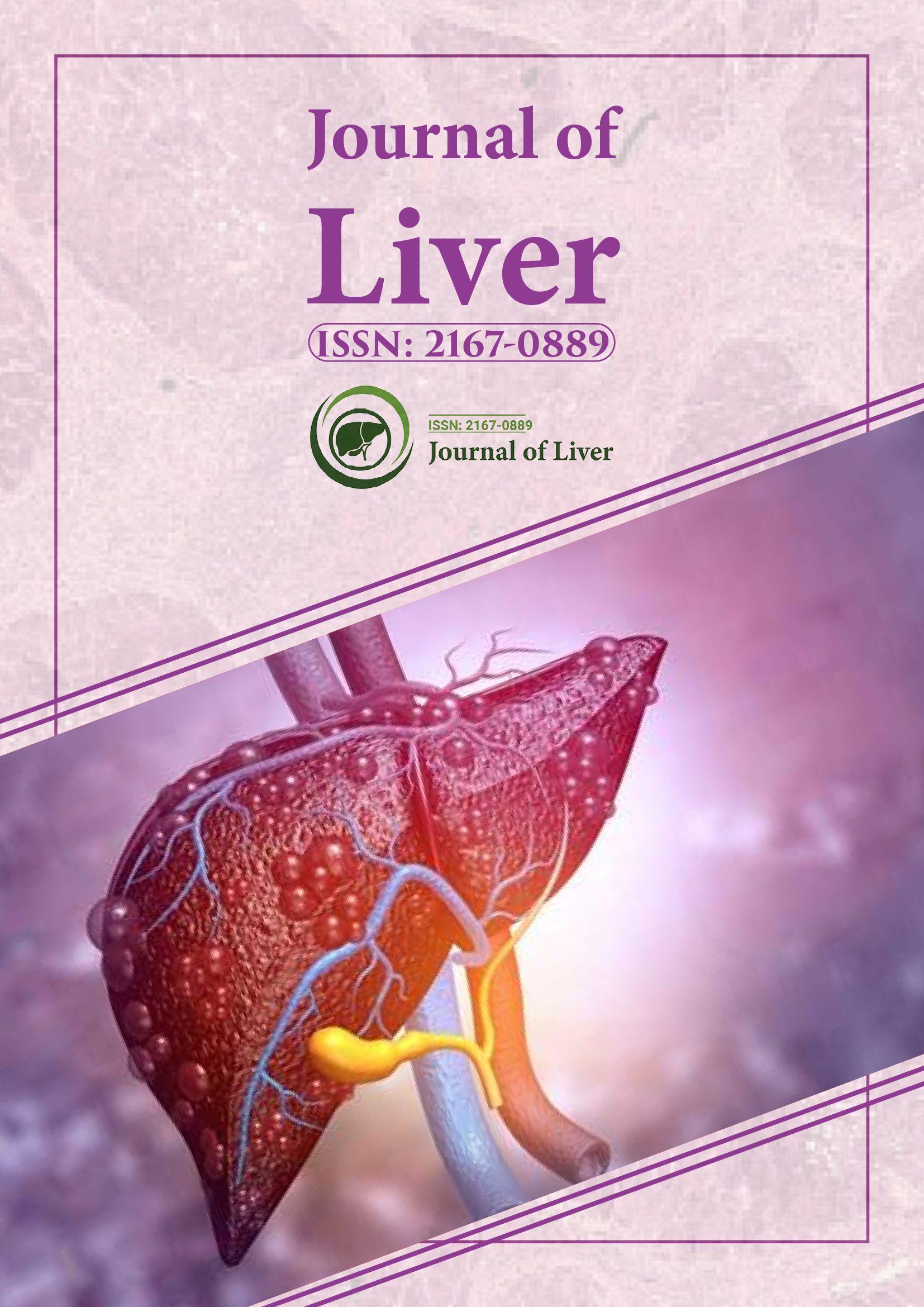Indexed In
- Open J Gate
- Genamics JournalSeek
- Academic Keys
- RefSeek
- Hamdard University
- EBSCO A-Z
- OCLC- WorldCat
- Publons
- Geneva Foundation for Medical Education and Research
- Google Scholar
Useful Links
Share This Page
Journal Flyer

Open Access Journals
- Agri and Aquaculture
- Biochemistry
- Bioinformatics & Systems Biology
- Business & Management
- Chemistry
- Clinical Sciences
- Engineering
- Food & Nutrition
- General Science
- Genetics & Molecular Biology
- Immunology & Microbiology
- Medical Sciences
- Neuroscience & Psychology
- Nursing & Health Care
- Pharmaceutical Sciences
Opinion - (2025) Volume 14, Issue 1
Liver Fat Accumulation and Elasticity in Hypertensive Pregnancies
Ramiro Afdhal*Received: 25-Feb-2025, Manuscript No. JLR-25-29107; Editor assigned: 27-Feb-2025, Pre QC No. JLR-25-29107 (PQ); Reviewed: 13-Mar-2025, QC No. JLR-25-29107; Revised: 20-Mar-2025, Manuscript No. JLR-25-29107 (R); Published: 27-Mar-2025, DOI: 10.35248/2167-0889.25.14.247
Description
Preeclampsia affects of pregnancies worldwide and is a leading cause of maternal and fetal morbidity. It is characterized by elevated blood pressure and proteinuria after 20 weeks of gestation, often progressing to systemic complications. Among the affected organs, the liver is particularly susceptible due to endothelial dysfunction, microvascular damage and inflammatory processes.
Although standard liver function tests can reveal some abnormalities, they are often insufficient to capture early or subclinical hepatic changes. Transient Elastography (TE) provides quantitative data on liver stiffness and steatosis, which may reflect structural and functional alterations even in the absence of overt biochemical derangement. This study investigates the application of TE in pregnant women diagnosed with preeclampsia, comparing findings with those of normotensive pregnant women to determine the extent and pattern of hepatic involvement.
Liver stiffness
Liver stiffness, as measured by TE, has been extensively validated in various chronic liver conditions, such as hepatitis, nonalcoholic fatty liver disease and cirrhosis. Increased liver stiffness typically indicates inflammation, congestion, fibrosis, or cholestasis. CAP, an add-on feature of TE, quantifies liver fat content by measuring ultrasound signal attenuation.
In pregnancy, liver diseases such as HELLP syndrome (Hemolysis, Elevated Liver Enzymes and Low Platelets) and acute fatty liver of pregnancy are known for their severe impact. However, less dramatic but still clinically significant hepatic changes can occur in preeclampsia. Understanding these subtler changes can improve patient monitoring and risk stratification.
Discussion
This study reveals that preeclampsia is associated with increased liver stiffness and fat accumulation even in the absence of overt liver dysfunction. These changes may reflect hepatic congestion, microvascular alterations and metabolic disturbances that accompany preeclampsia. TE, through its non-invasive nature, offers a safe and reproducible method for detecting these hepatic changes during pregnancy.
Liver stiffness in preeclampsia
The higher LSM values observed suggest that hepatic involvement is more common than clinically appreciated. Increased stiffness could result from hepatic venous congestion due to elevated central venous pressure or from endothelial dysfunction leading to inflammation and edema. These mechanisms mirror those seen in congestive hepatopathy, though in a different physiological context.
Steatosis and CAP elevation:
The observed increase in CAP scores aligns with emerging evidence that metabolic abnormalities are more prevalent in preeclamptic pregnancies. Insulin resistance, dyslipidemia and oxidative stress may all contribute to hepatic fat deposition. Whether steatosis precedes or results from preeclampsia remains unclear, but its detection is relevant for long-term maternal health, particularly in identifying women at risk for NAFLD.
Clinical relevance
Even when liver enzyme levels are within normal limits, TE can identify underlying structural changes. The ability to stratify liver stiffness may help identify preeclamptic patients at higher risk of complications or those who may benefit from closer monitoring. Additionally, recognizing steatosis could inform postpartum follow-up and lifestyle counseling.
Implications for practice
Given the observed differences in liver metrics between preeclamptic and normotensive pregnancies, TE may have a role in comprehensive maternal assessment. It provides data that traditional labs might miss and could potentially support decision-making in complex pregnancies.
Routine use of TE is not currently standard in obstetric practice, but selective application in high-risk cases such as severe preeclampsia, abnormal liver function, or suspected HELLP syndrome may be valuable. Additionally, postpartum follow-up for women with elevated CAP scores may help identify early onset metabolic liver disease.
Preeclampsia is associated with measurable changes in liver stiffness and fat content as evaluated by transient elastography. These alterations, even in the absence of clinical liver dysfunction, suggest subclinical hepatic involvement. TE offers a non-invasive, reliable approach to assess these parameters and could be integrated into care protocols for pregnant women with hypertensive disorders. Further studies are needed to understand the full significance of these findings and their potential role in both prenatal and postpartum care.
Citation: Afdhal R (2025). Liver Fat Accumulation and Elasticity in Hypertensive Pregnancies. J Liver. 14:247.
Copyright: © 2025 Afdhal R. This is an open-access article distributed under the terms of the Creative Commons Attribution License, which permits unrestricted use, distribution, and reproduction in any medium, provided the original author and source are credited.
